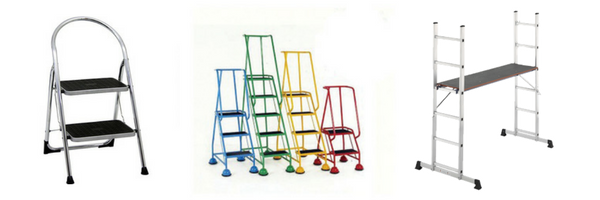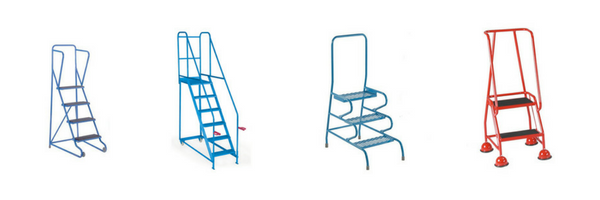
When a task involves the use of access equipment you’re always going to be dealing with some risks. Ensuring you have the right equipment for the job is paramount in avoiding hazards.
What equipment is best for the job in hand?
You must identify which product is suitable for the task. Do you need a step stool, step ladder extension ladder or work platform? Each product is tailored to do specific tasks choosing one is difficult, reading the following questions will make the decision a little easier.
How long will the equipment be used for?
Certain equipment isn’t designed for long term use; if carrying out a long-term task at height, invest in a suitable platform. Mobile scaffold and work platforms are designed for long term use whilst making working at height safer for the user. Ladders on the other hand are best suited to short term use.
What height will you be working at?
Every product will have a different working height so this factor is one you must greatly consider. For low level work a step stool or small step ladder is ideal but for larger heights and extension ladder or maybe even a work platform is needed. By not choosing a product which has a suitable maximum working height you are increasing the risk of a fall.
Will you be working around electricity?
Access equipment is mainly constructed from Aluminium or Fibreglass. Fibreglass is the best choice of ladder whilst working around electricity due to its non-conductivity. However, if the ladder is constructed of steel; electricity is still a hazard.
Risk Assessment
Before using any access equipment, a risk assessment must be carried out every time; this will ensure that you have minimised the risks of falling from any height. Even falling from a step stool can cause serious injury. An adequate risk assessment would include:
- Look for any hazards associated from falling from height around the workplace and at the site used. Choose a suitable product to use
- Decide how certain hazards will affect the user and surrounding people
- Consider the risks, are there measure in place to deal with these risks
- Record the findings and regularly review. If any changes occur, ensure you have the precautions
in place to deal with these risks.
Steps
There are two types of steps: step stool and the folding step stool. The step stool more often then not is up to two treads high and best used when needing a little bit of height; commonly used by children and adults. However folding step stools has a maximum platform height of 1m and can fold for easy transport or storage.
Most suited to shorter tasks and have low level of risk associated with them. Examples of use:
- Assembly work at low level
- Cleaning
- Access to machines
Ladders
As ladders are generally lightweight as a result of this they are quick to deploy and use at any moment. Ladders get classified into groups such as: step ladders, extension ladders, multi-purpose ladders etc. Ladders are mostly suited to short tasks with low levels of risks. Example of use:
- Measuring and alignment work
- Changing lamps
- Access to a workstation
Good Practice
- Erect at a safe angle
- Secured (preferably at the top)
- Rubber footing is advantageous, to stop sliding
- Positioned close to the work site to avoid over-reaching
- Clearly marked out at the base to avoid anybody or vehicles bumping into the ladders
- Only one person on the ladder at one time

Work platforms
Work platforms offer the safety and stability needed when work needs two hands. With integrated castors making them easy to move and suitable for mobile applications. Robust bars at knee high ensure a safety railing for additional safety.
Work platforms are ideal for longer tasks involving heavy materials or the need for two hands. They bridge the gap between a ladder and a work platform. Example for use:
- Lengthy maintenance and inspection jobs
- Work with machines
- Lengthy ‘overhead’ jobs
- Shelf work with bulky items
Mobile Scaffolding
Featuring a very large work platform they provide comfort and safety for working at height. With castors to enable them to be mobile. Examples of use:
- Dry construction work
- Maintenance and repairs to ceilings
- Lengthy work on facades or walls
Good Practice
- Erected by a trained person
- Must have stabilisers deployed as necessary to meet the correct height to base ratio
- Must use stabilisers if above 2.5m high
- Have all castors firmly locked before use
- Needs a ladder access to the work platform
- Never move a scaffolding unit while the tower is in use
- Regularly inspect and maintain
Access Equipment Direct2u is part of a specialist network of websites which commit to providing all customers with the best quality products and after care at competitive prices. Our range of access equipment includes but not limited to EN131 warehouse steps, step stools, work platform and mobile scaffolding. Purchasing from Direct2U will leave you happy and confident. If you are in need of any advice or unsure about any of our products; please don’t hesitate to contact us via phone or live chat!